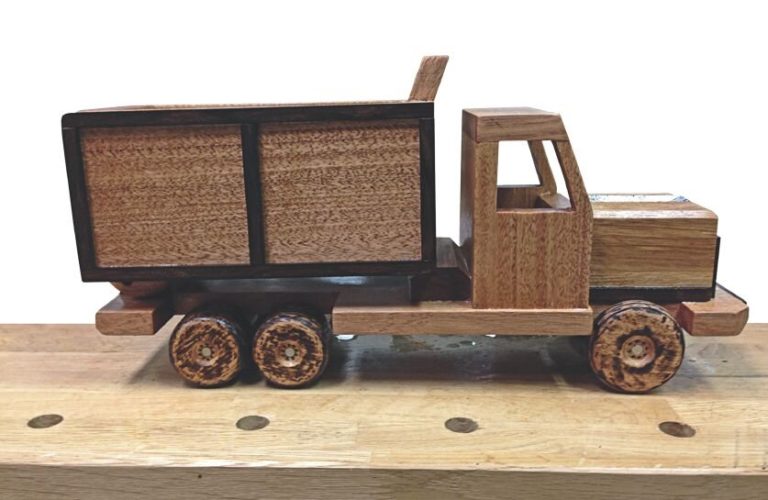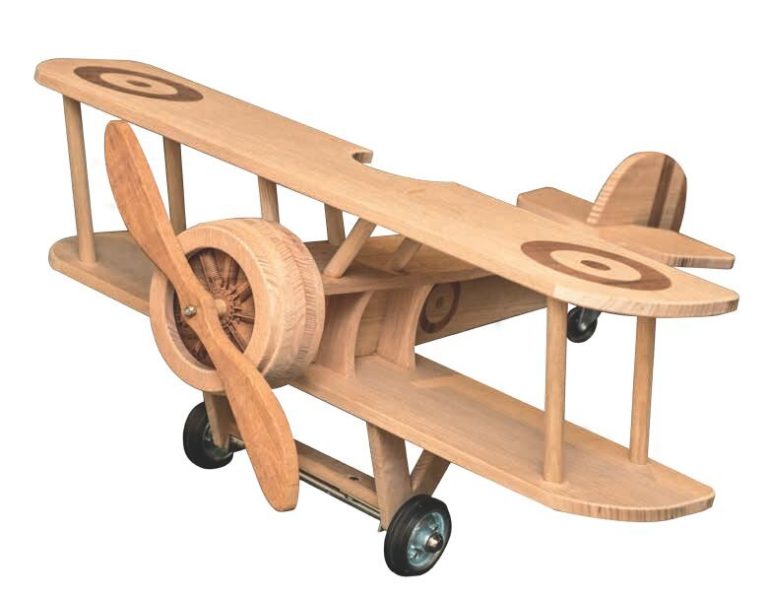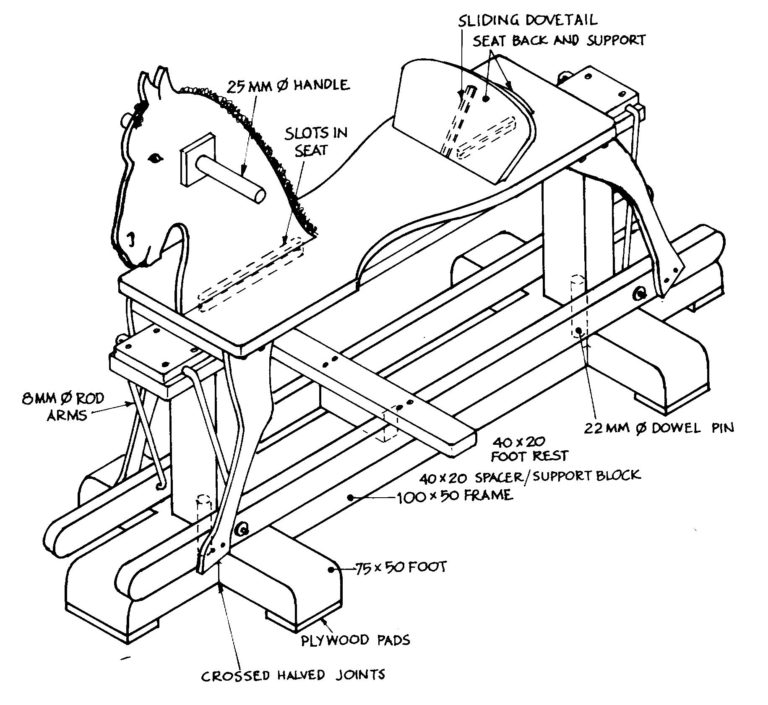Easy toy-car project
By Bert Toomey
I am a resident at a retirement village, it’s essential that one has something to do. The toys I make keep me busy throughout the year. I have the enjoyment of making them and the pleasure of donating them to various children’s hospitals at Xmas. I trust this, and any following articles will encourage you to do the same. here is a list of the tools and equipment I have acquired or made over the years.
1, The workhorse, a 14” Tanner band saw, mostly used with a 6 mm blade.
2, A Ryobi ™ bench drill press.
3, A home built disc sander, 200 mm diameter, with a heavy Aluminium disc and provision for dust extraction.
4, Ryobi ™ ‘shopvac’.
5, Horizontal borer, home built; considered by some to be obsolete but very useful.
6, 110 mm centre height, engineers’ lathe.
7, Cobra ™ table saw, which has been slightly modified.
8, Various cramps and other hand tools.
The toys are made from kiln dried, pine, kindly donated. PVA glue holds everything together. I avoid metal hooks or eyes, which may be unscrewed or cause injury. The toys are undercoated, painted with acrylic paint and finished with a coat of Polycrylic ™which gives a gloss finish for cleaning. I find the Resene™ test pots a worthwhile ‘investment’.
Let’s get on with the body of the car, which is made from a 155 X 100 X 2 1 mm ‘blank’.
The band saw is the obvious choice for cutting the shape. First make a straight cut from point A to point B, this will make life easier as cutting proceeds.
NOTE, this cut may close if done with the band saw and you may not be able to back out of the cut. Use a saw which makes a cut wider than the band saw blade; experience speaking!
Some external finishing can be done with the sanding disc. The internal curves were finished with a Magicut file and a medium grade abrasive paper, glued to a 300 mm length of 25 mm diameter dowel.
The wheels are made from 50 X 50 X 20 mm blanks. The axles for his model are pieces of 6 mm dowel.
The bigger wheels can be made in several ways; machine them in bulk, from blanks, on the lathe, form them on the bandsaw, using a ‘sliding table’/jig, with a hole saw, or cut by hand on the band saw and finished on the disc sander.
Bulk production using the lathe. Drill a 6.5 mm hole in the centre of each blank; use some form of ‘jig if you are making a lot.
Thread the blanks onto a length of M6, threaded rod, which has been centre-drilled at each end – I suggest 160 mm. You will need two M6, nuts and two M6 X 30 mm Body washers, Mitre Ten stock them. With the blanks assembled on the rod, put a nut and washer on each end and tighten one nut; there’s no need to use enormous force. .
Cut the corners off the blanks, I use the band saw for this, machine them to size, holding a nut in the chuck as a driver, support the assembly on the tailstock centre, preferably the revolving kind.
Finish the assembly in the lathe with various grades of abrasive paper. Paint the assembly with Polycrylic ™ , this is a quick drying, water based, protective coating, which raises the grain like Grandad’s whiskers, when dry sand again. By applying the Polycrylic ™ at this stage the grain will not rise when the water based undercoat and finish coats are applied.
The steering wheel is made from 4.2 mm plywood, the column, from a 45 mm length of bamboo, kebab skewer, obtainable at a $2 shop. I use these as axles for the smaller toys. The diameter is consistent at 4.2 mm. The hole for the column is drilled on the horizontal borer. Ask a helper to sight the angle if using a portable drill.
Assembly. Cut the 6mm axles to length; lightly sand the ends, making allowance for the plastic, M6 washers which are placed between each wheel and the body of the toy, these are, 12 mm OD and 1.5 mm thick, obtainable from Hi-Q Components, ph 0800 800 293 part No: 03-PNW6/12A Washers can also be made from the lids of ice cream cartons. Put a drop of glue into each wheel, smear it around with a toothpick and complete the assembly. Adjust the wheels and axles for a good running fit and let the glue set.
Re drawings of this toy, you can download and print out the drawing featured in this article. The drawings are all full size, eliminating arrows and dimensions. On some of the drawings I have added a scale of centimetres, just in case there was some variation from tracing to photocopy. In retrospect, not such a good idea but I’ve left things as they are, no need to make another set of tracings! Readers may take the dimensions directly from the drawings. Happy toy making.
Dune Buggy
The Dune Buggy is made from a piece of wood measuring 140 mm long, 45 mm wide and 40 mm thick. The width was obtained by gluing two pieces together. What has been said for the Flintstone car applies equally to this model.
First drill the 10 mm hole, this creates a curve where you want it and helps when cutting the body to shape. Cutting with the band saw requires concentration. I almost cut the seat away, be careful of that one. Drilling the hole for the steering wheel also needs some care. I made a shallow groove in the top of the seat which was filled when filling the cut where the seat was almost cut away. The wheels were made by carefully cutting them to shape and finishing on the disk sander.
The squares overlaying outline are all one cm. Don’t forget to put the washers on the axles, which are made from 6 mm doweling.



